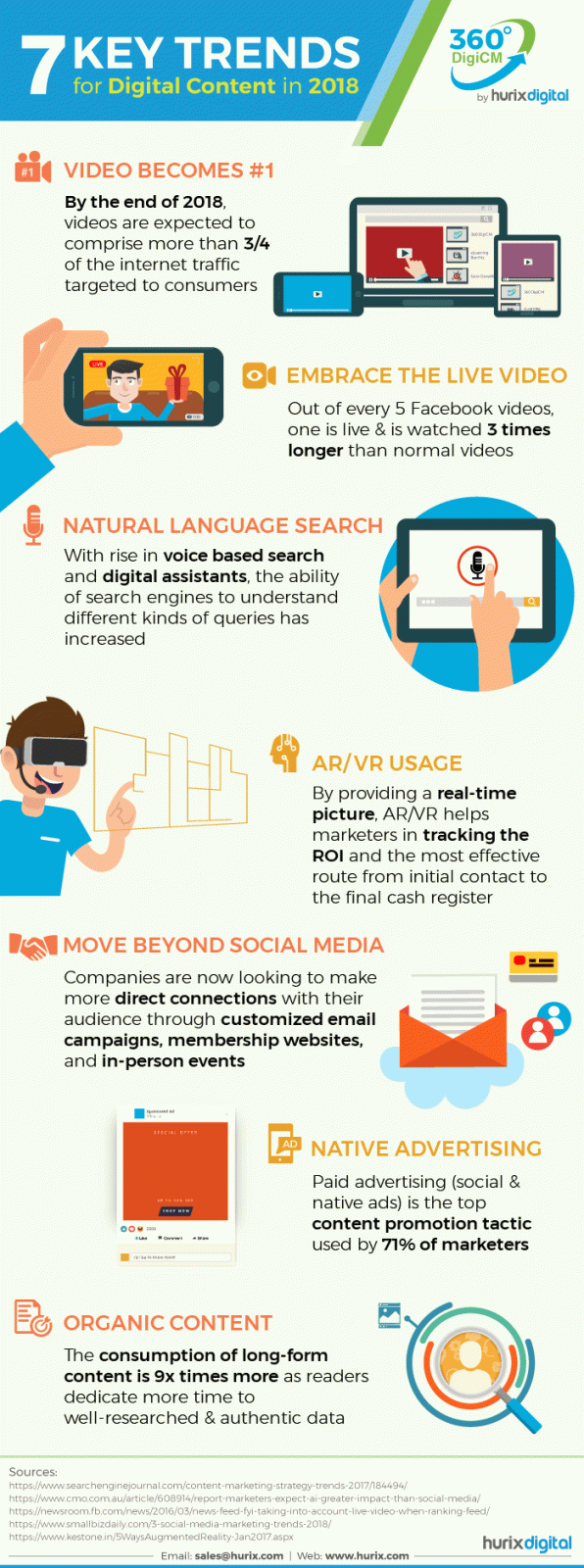Brace Yourselves for Video-First Content Marketing!
Gone are the days of long posts and blogs on your official websites or social media platforms like Twitter, LinkedIn or Facebook. With the average attention span getting shorter and shorter and enticing hyperlinks popping up in the middle of what you are reading, it’s just not possible for people to stay focused.
How do you then fight this challenge and ensure that your message reaches the desired audience?
Multiple analysis show that content ‘watched’ is better retained than content ‘read’. This is because the video saves the reader the effort of conceptualizing what they read.
This shift has had far reaching impact on the ‘kind’ of content that companies need to produce today, to engage better with their audience, including training, promotional and digital marketing content. Animoto, one of the most popular video-creation services, stated that we have now moved to a video-first approach of marketing.
Facebook used the term ‘video-first’ in 2017 to explain the nature of current content consumption and production. This term was coined to justify the result of several surveys declaring that social marketing equals mobile videos, and the users not only want to consume content, but they also want to produce it. This strategy gave life to Facebook’s Live Video feature.
A video-first marketing has proved to be very essential for companies to educate, both onboarded and prospective clients about their potential service offerings and products.
Several companies go for a multimedia approach to carry out internal training programs for their employees, as a video-based learning nugget can be beneficial for viewers of all levels of awareness and successfully spread the message across a wider audience.
However, at times creation of impactful videos can be a challenge, as maximum marketing videos that pop-up on social media are watched without sound. To overcome this, visually rich videos that engross the viewers in a short span of time are essential for successful video-first marketing.
By keeping the video-first approach as the base of marketing, different technologies enriching the visual content have also gained momentum. This has had a positive effect on the usage of AR/VR as well. Companies functioning within varied domains use simulations to increase the interactivity and grasping powers of their clients and employees. From training modules to giving a prospective customer the tour of a property, firms are now optimally using AR/VR within the available scope.
An important fact that still holds ground, even with the evolution of different video enriching techniques is that these approaches do not make the written content obsolete. A video-first approach emphasizes largely on the video and other visual forms of content, but it also lays focus on developing well researched and organic written marketing variants, to complement and enhance the reach of video-based messages.
When we talk about the development of content, the seekers get more attracted to an approach that lists the challenges and the ways to solve it effectively. A marketing approach that was earlier termed ‘mobile-first’ has now revolutionized to ‘video-first’ within a couple of years.
360˚Digital Content Marketing powered by Hurix Digital helps you achieve the right edge in creating visual marketing assets equipped for the current needs of your audience.
Contact us today!





